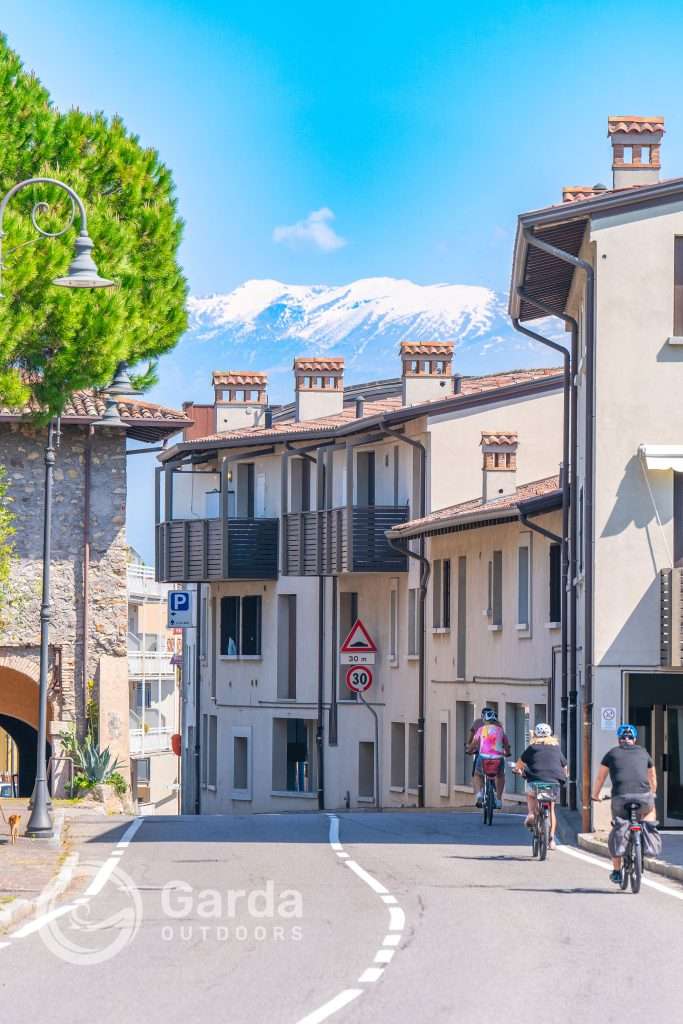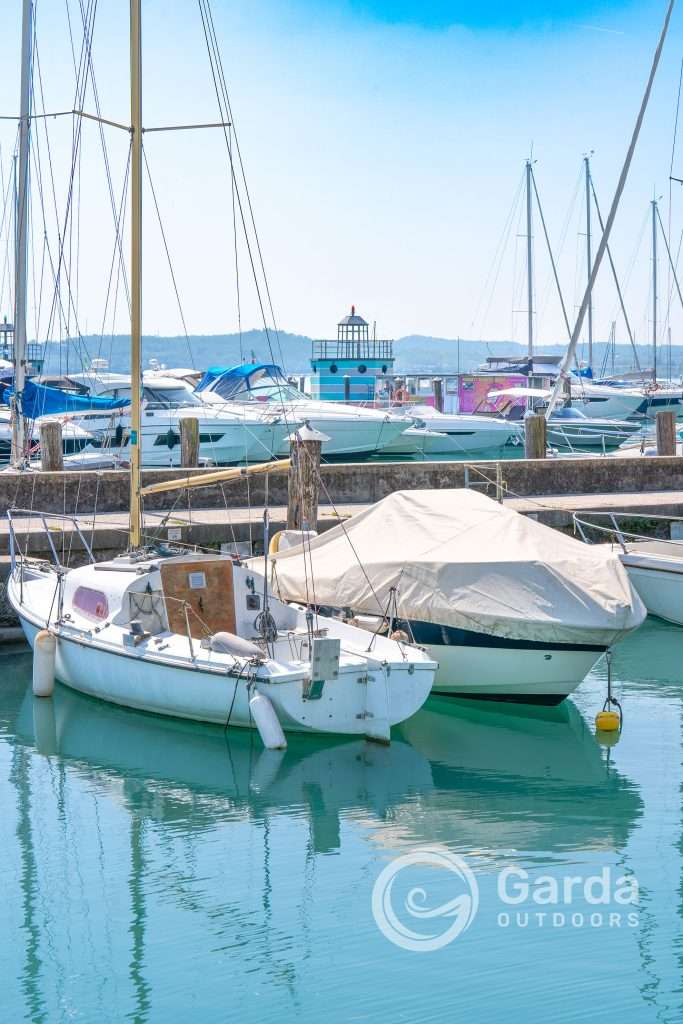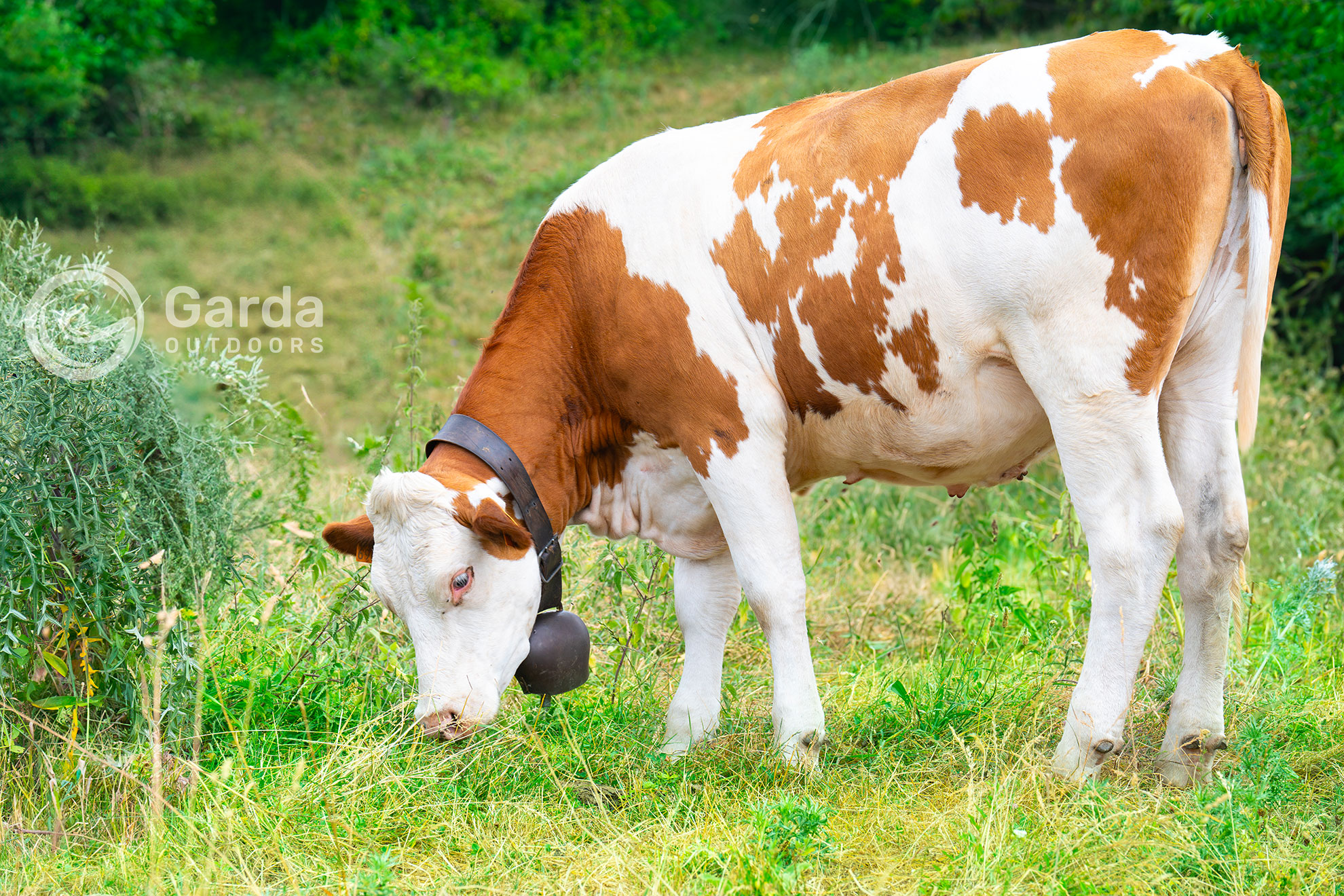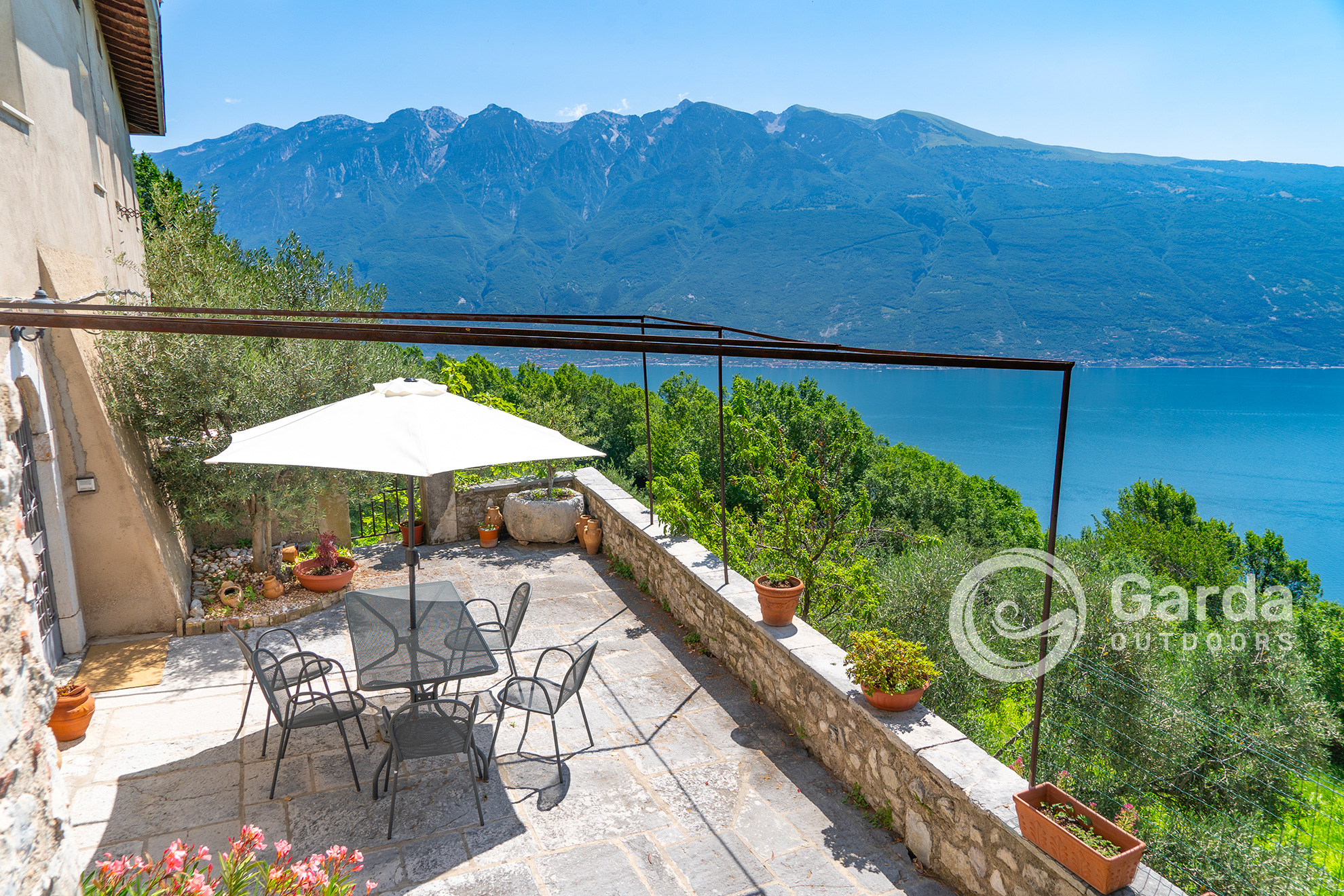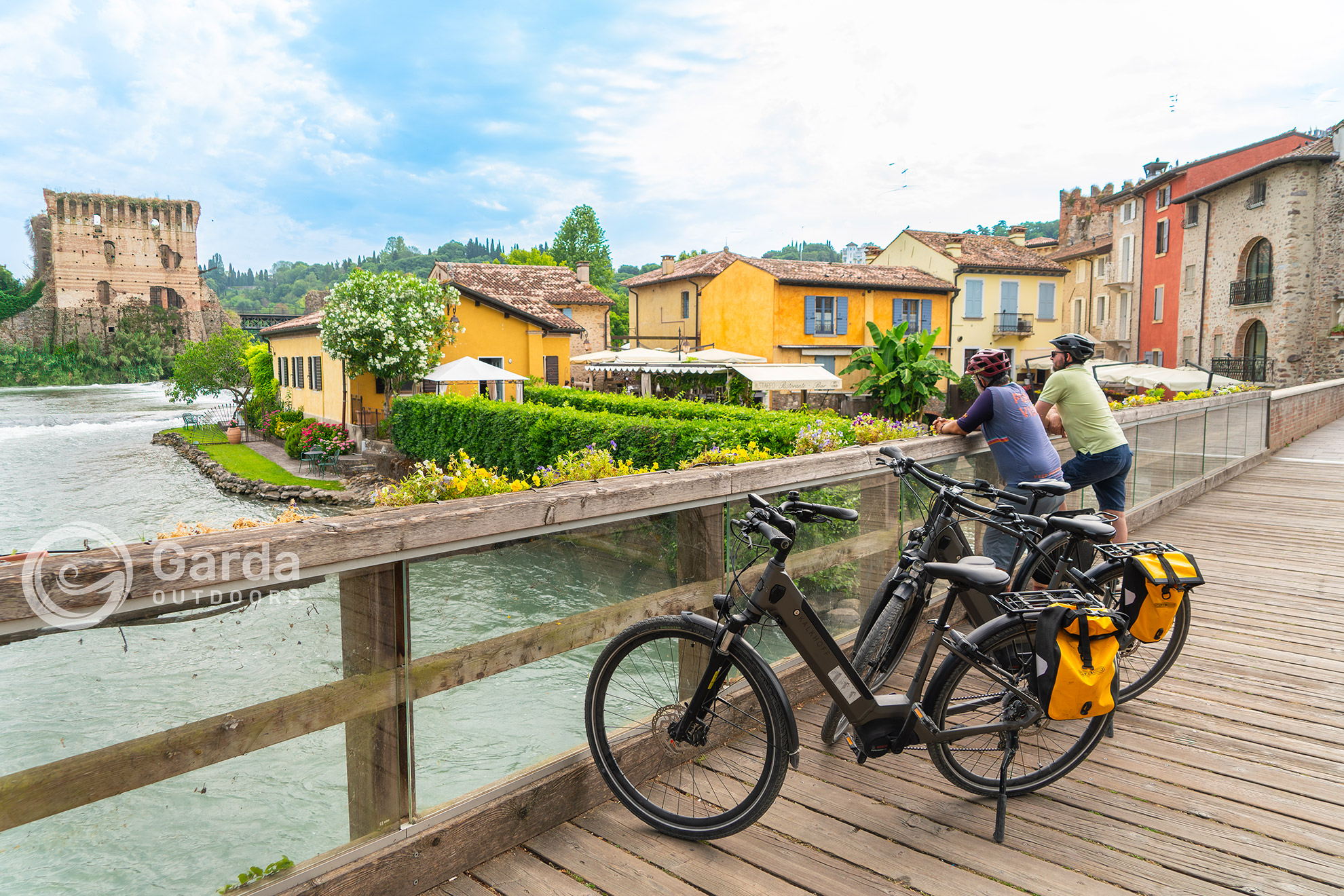Moniga del Garda is one of the 7 villages that make up the splendid Valtenesi, in the heart of the hills between Desenzano and Salò.
Visitors can immerse themselves in peace and relaxation, which reign supreme here even in high season.
An area that offers history, culture, beaches, walks and all the flavor of typical products, including rosé wine and DOP extra virgin olive oil.
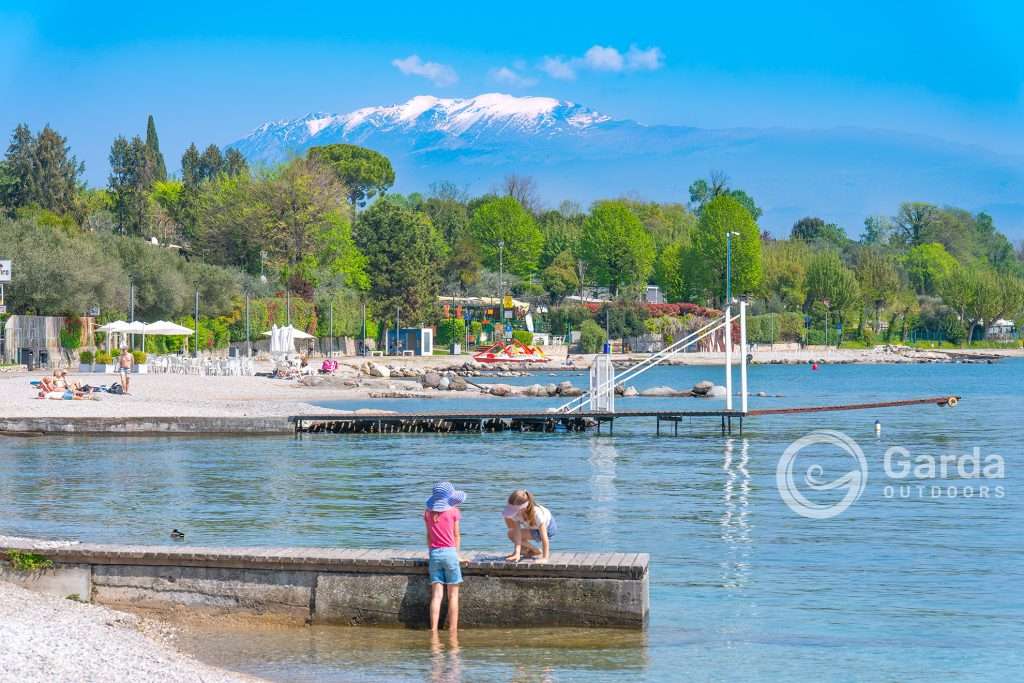
Historical notes on Moniga del Garda
The origins of the town are very ancient, there are in fact the remains of a stilt house dating back to around 1800-2000 BC, the Ancient Bronze Age. While an altar testifies to the presence of the Romans of the 4th and 5th centuries BC.
Moniga today has the typical medieval structure with countless streets and alleys, and its picturesque castle with wall structures.
What to see in Moniga del Garda
The castle
Moniga del Garda, like Padenghe and many other villages in Valtenesi, boasts a Castle which, compared to similar ones, is particularly well preserved. Its original function was not defensive, but rather as a refuge for the village population during dangerous situations; it is therefore correct to define it as a refuge castle (from the Latin receptum = refuge).
Located in the western part of the town on a small hill, it is not built on the edge of an escarpment, but on a road that connects other surrounding castles. This less strategic position could explain why it never hosted a lord and therefore was not subject to attacks of conquest, preserving it from significant architectural changes.
Built in the 10th century to defend the population from the incursions of the Hungarians, the castle of Moniga has undergone various transformations over the centuries. After the period of raids, the castle was abandoned and left to its fate of decay. Subsequently, it was used as a warehouse and shelter for animals, until it became a sort of bivouac and no man’s land.
Its walls, with their Ghibelline battlements, vegetable gardens and houses inside, were the subject of modifications between the 14th and 15th centuries. Private homes and small vegetable gardens were built within the city walls. The entrance portal, located on the northern side, was used as a bell tower for the nearby parish church.
Curiosity: it is precisely between the various castles in the area that, during the period of the barbarian invasions, an ingenious connection system was developed thanks to which, through the use of precise signals, it was possible to warn of danger from here to the city of Brescia.
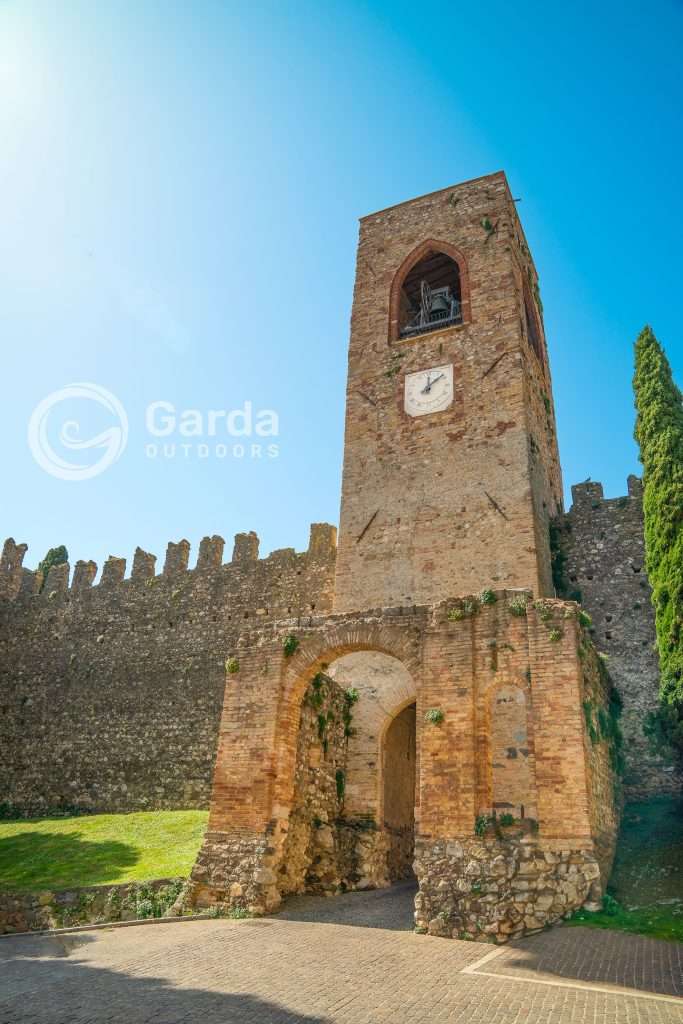
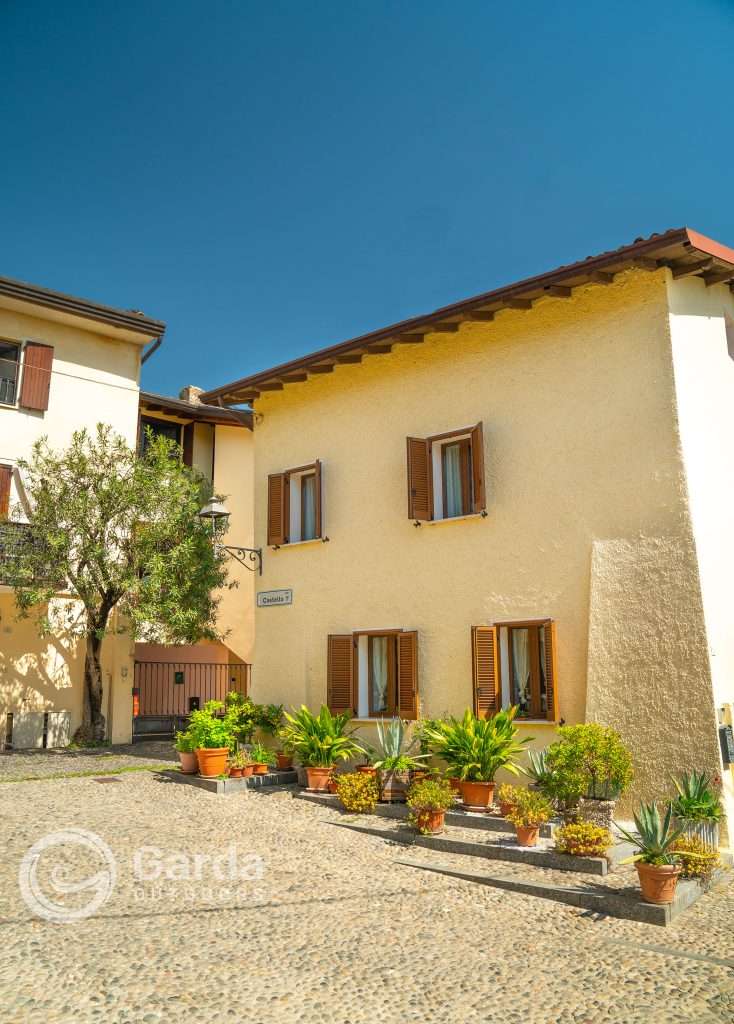
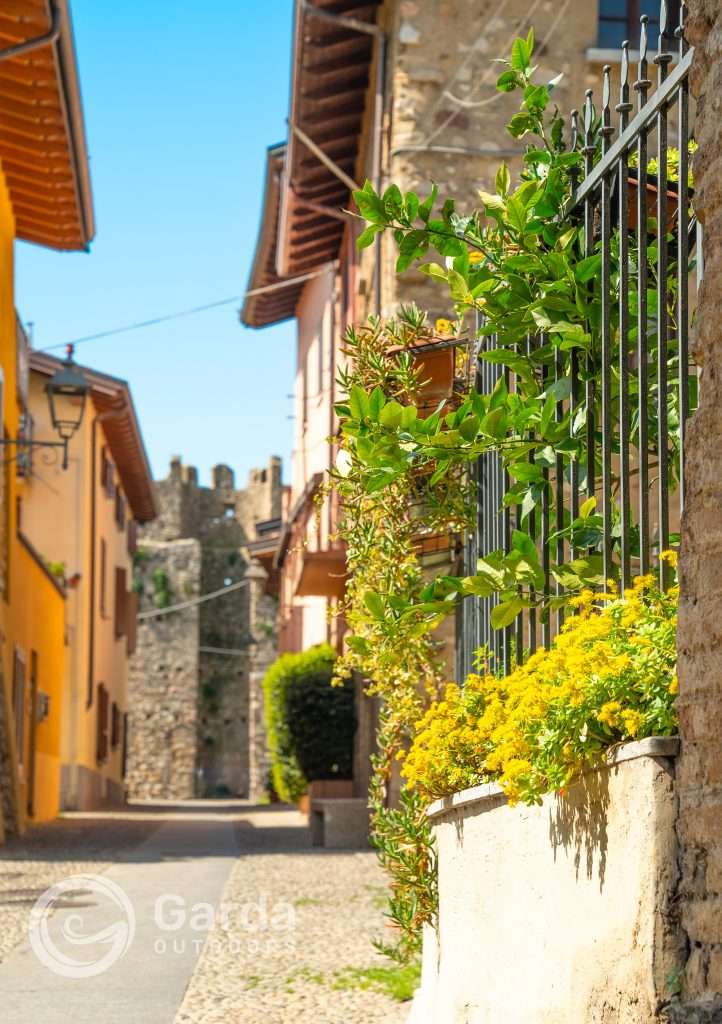
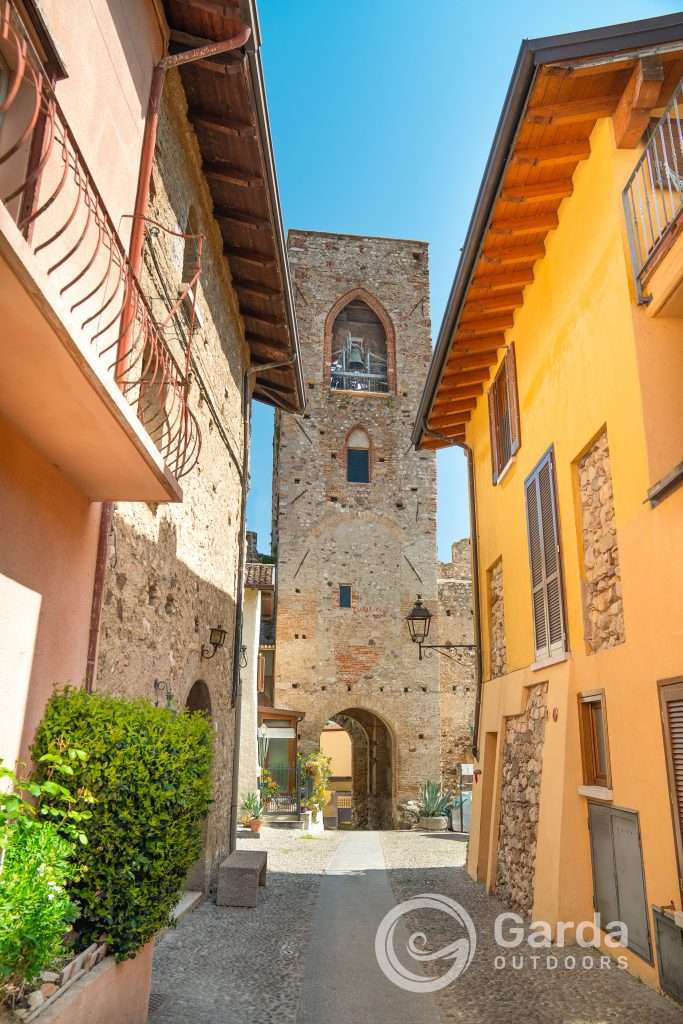
Today, the area surrounding the castle has been transformed into a public park, which offers a pleasant walk in all seasons, a nice panoramic bar, and which becomes a musical entertainment area during the summer.
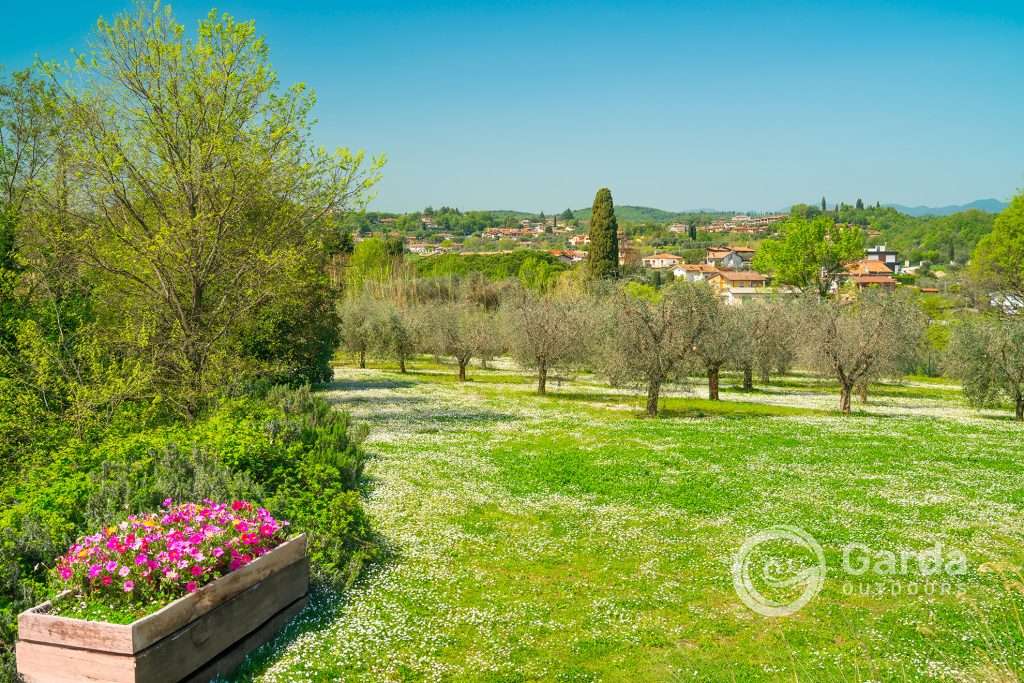
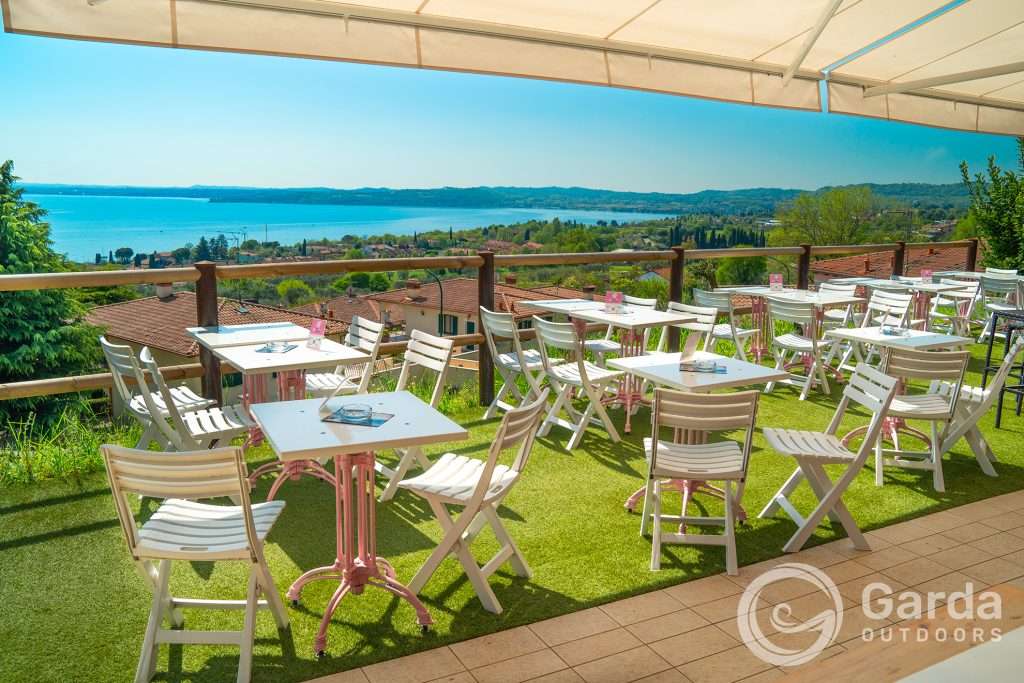
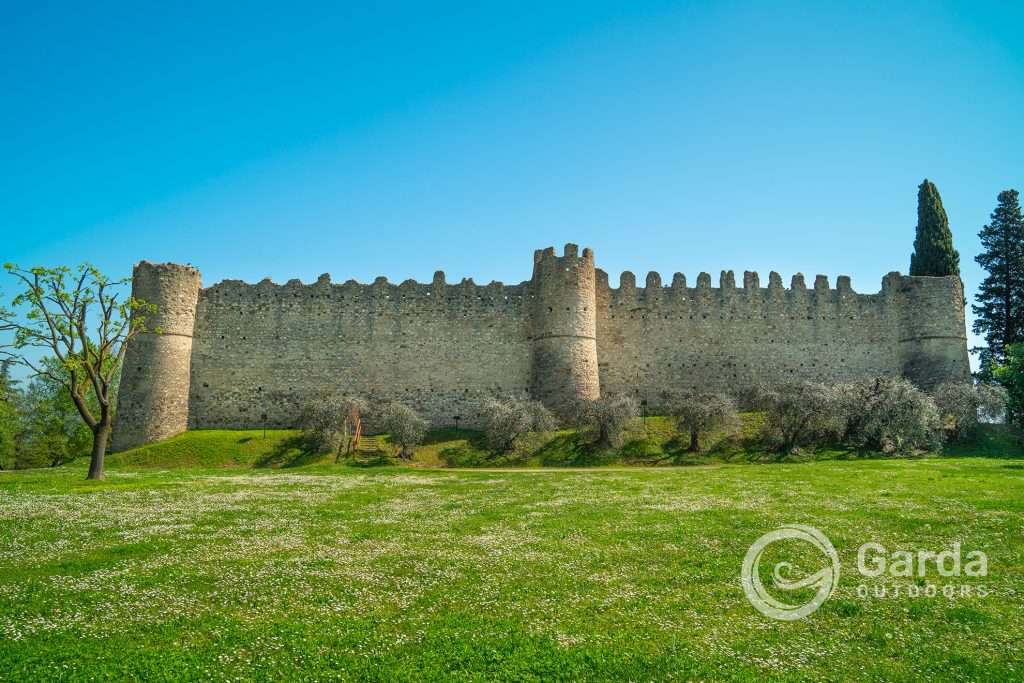
The church of San Martino Vescovo
The church of San Martino, one of the oldest in Valtenesi, was originally a chapel dependent on the Parish Church of Santa Maria in Solarolo. In 1454 it became autonomous and was consecrated to San Martino. This allowed the parish priest to administer the sacraments and to have land and goods available.
The church was enlarged and rebuilt in the Baroque style in the mid-18th century. The entrance portal has a large window with stained glass windows depicting Saint Martin giving his cloak to the beggar. Inside, the single nave is decorated with stucco, marble and five altars.
The main altar is in the center of the presbytery, with marble inlays in various colors and a marble tabernacle. Along the walls there are the altars of Saint Joseph, the Holy Rosary, the Crucifix and the Virgin, with gilded wooden statues.
In the apse, an altarpiece depicts Saint Martin, while on the choir there are paintings of the Adoration of the Magi and the Holy Family. A large canvas shows Pentecost. The sacristy is located on the sides of the presbytery, with cabinets for the holy oil and relics.
On the left side of the church, a door leads to the pulpit, while at the back there is an ancient stone baptismal font. A painting depicts the Madonna between San Domenico and San Francesco.
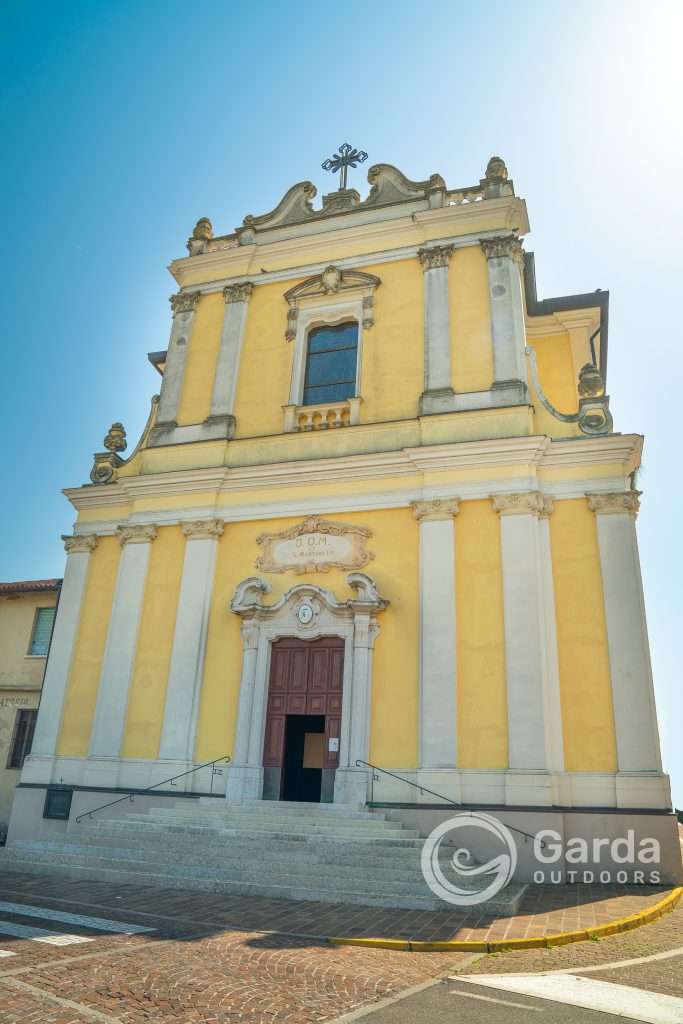
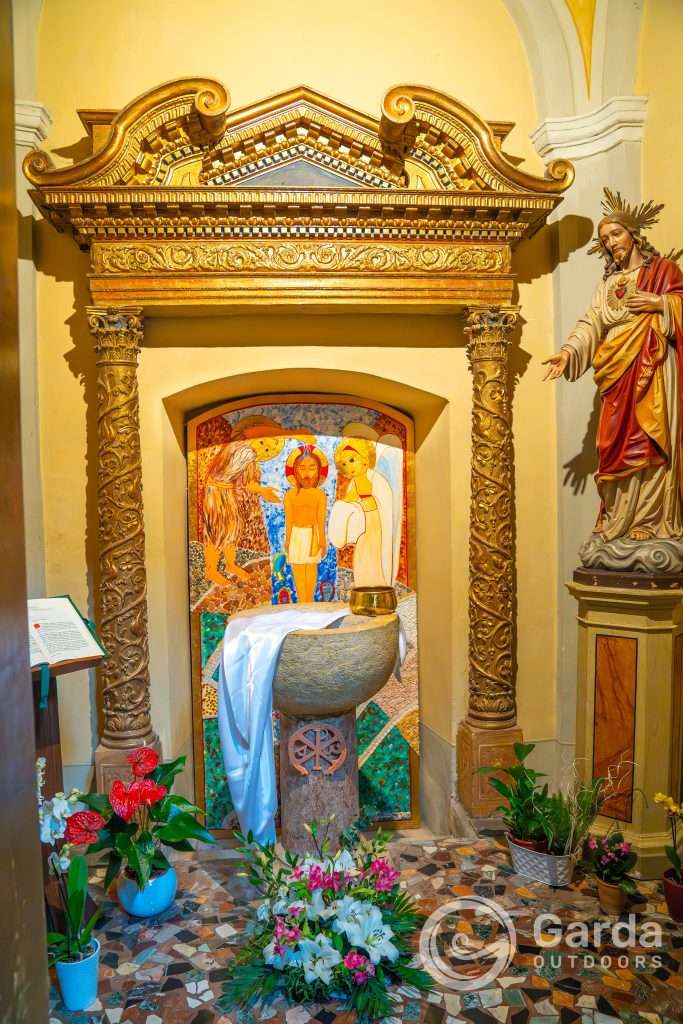
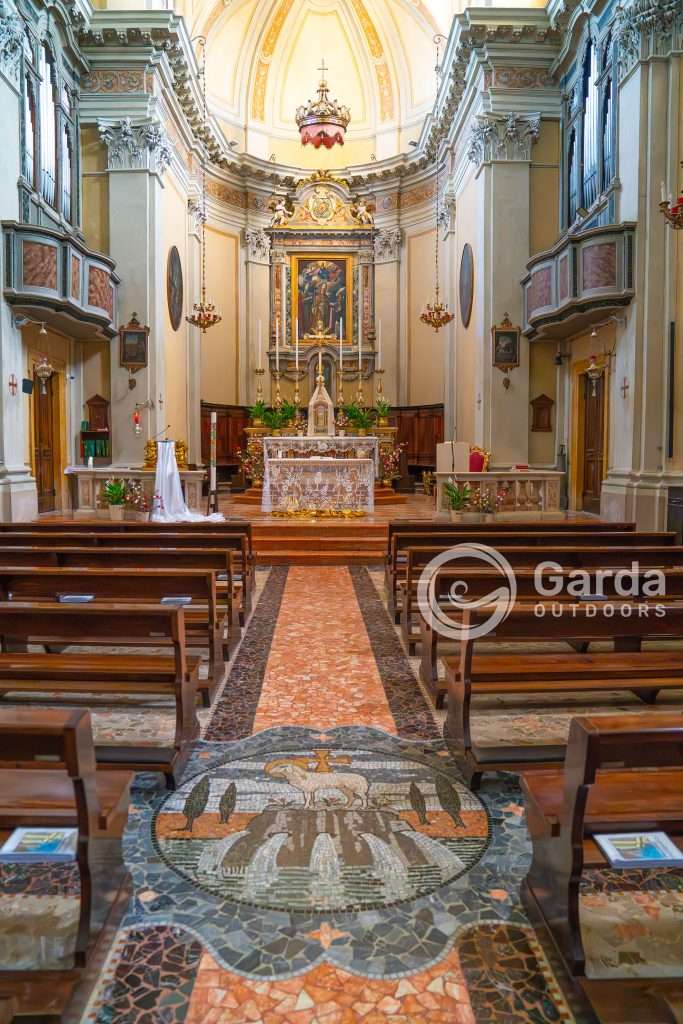
The church of the Madonna della Neve
This small Romanesque church is also known as the Church of San Michele, from the name of the surrounding town. Located in a truly bucolic setting, next to the town cemetery, this church has a rustic façade with a single nave. Oriented towards the east, it is surrounded by tall cypresses and a stream that separates it from the road.
It owes its name thanks to a miracle that occurred in Rome in 352 AD. Its construction probably dates back to the second half of the 16th century, as can be seen from the lack of citations in the minutes of the pastoral visits carried out in the region between 1529 and 1541.
The façade, with an unplastered gabled façade, is preceded by a square-plan pronaos accessible via a short staircase. The three windows and the small loggia that protect the entrance portal are the result of a modernization carried out during the 19th century.
The interior of the church has a single nave paved in ancient terracotta and a proportionate apse, with dimensions harmonious with the surface. From the presbytery spaces you can access the bell tower, a secondary entrance and a large sacristy.
Although the decoration of the walls is modern, highlighting the loss of the original frescoes, the church still retains authentic parts visible. In the past, it was used as a hospital during a cholera epidemic, which is why it was entirely painted in lime.
Dedicated to San Rocco and San Nicola, who were promoted to protectors following the epidemics that hit the population in previous centuries, the church of the Madonna della Neve is today mainly used as a cemetery church. However, in the 18th century, it was one of the most important religious buildings in Valtenesi, with a mass celebrated every day.
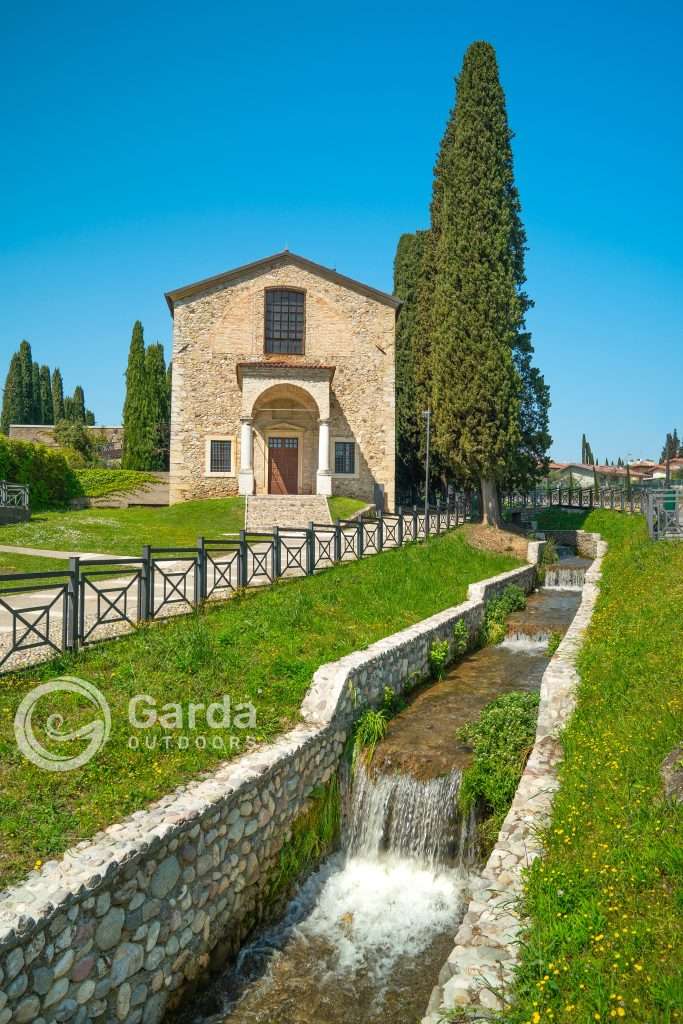
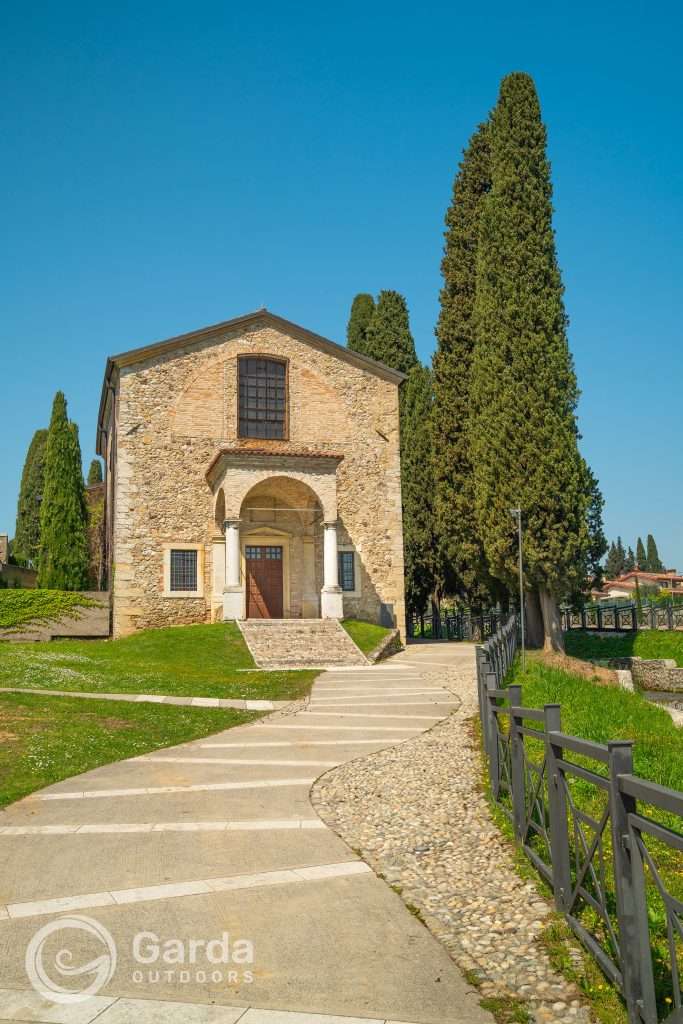
The port
The port area of Moniga del Garda is particularly beautiful and full of activities.
There are bars and restaurants along the shore, beaches for sunbathing, relaxing or simply taking a nice walk. There is also a well-equipped nautical port, built in 2005, from which to depart for suggestive boat trips to discover the entire Lake Garda. Click here.
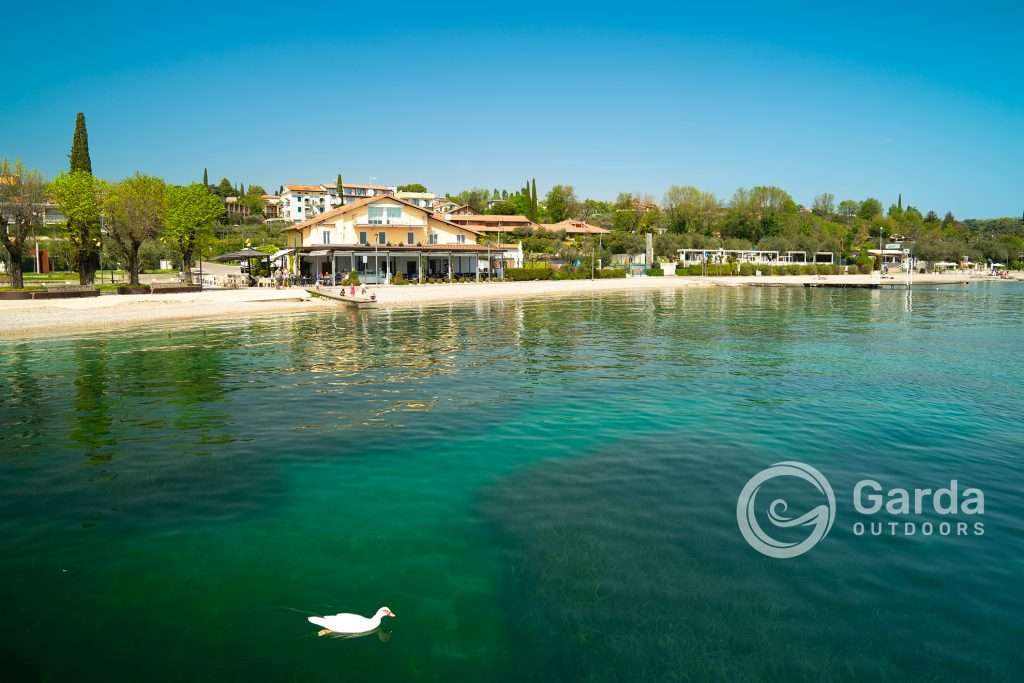
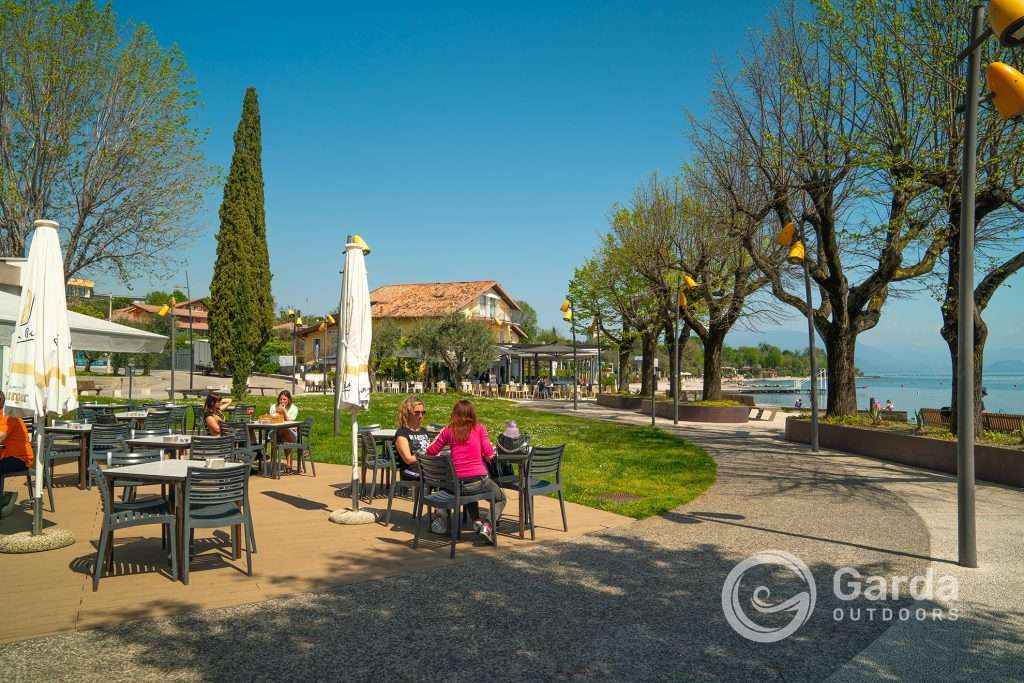
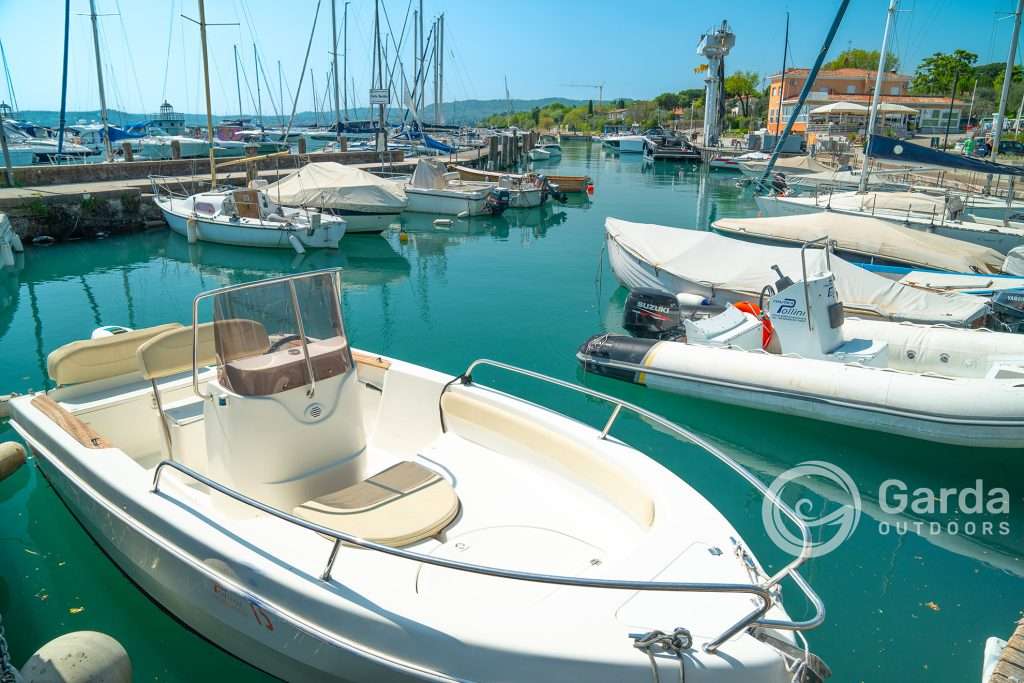
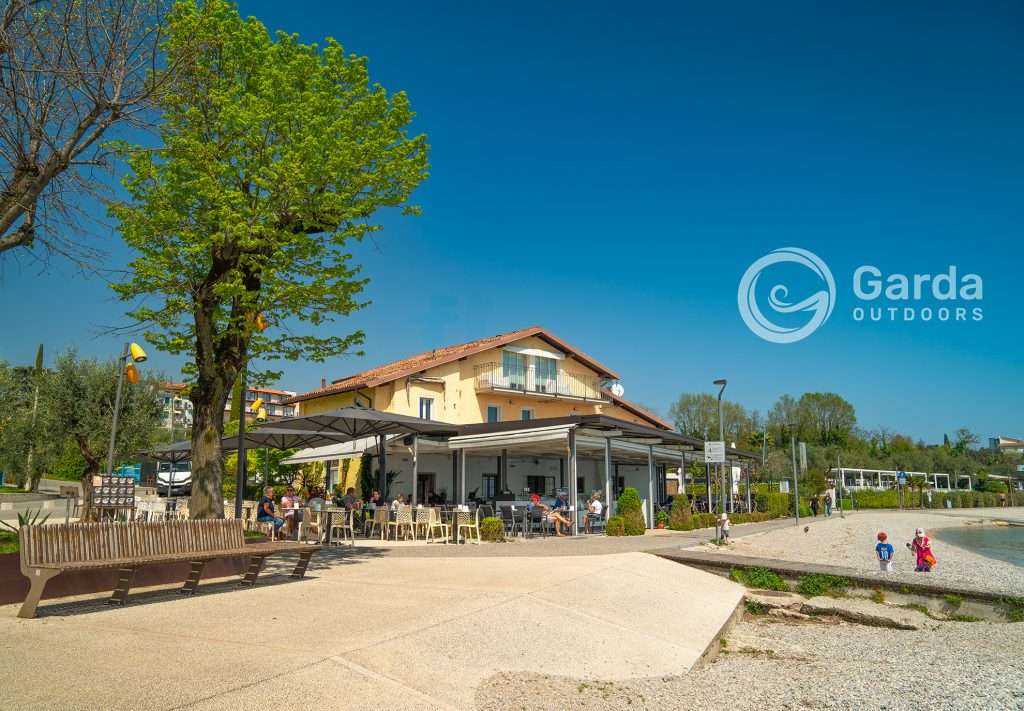
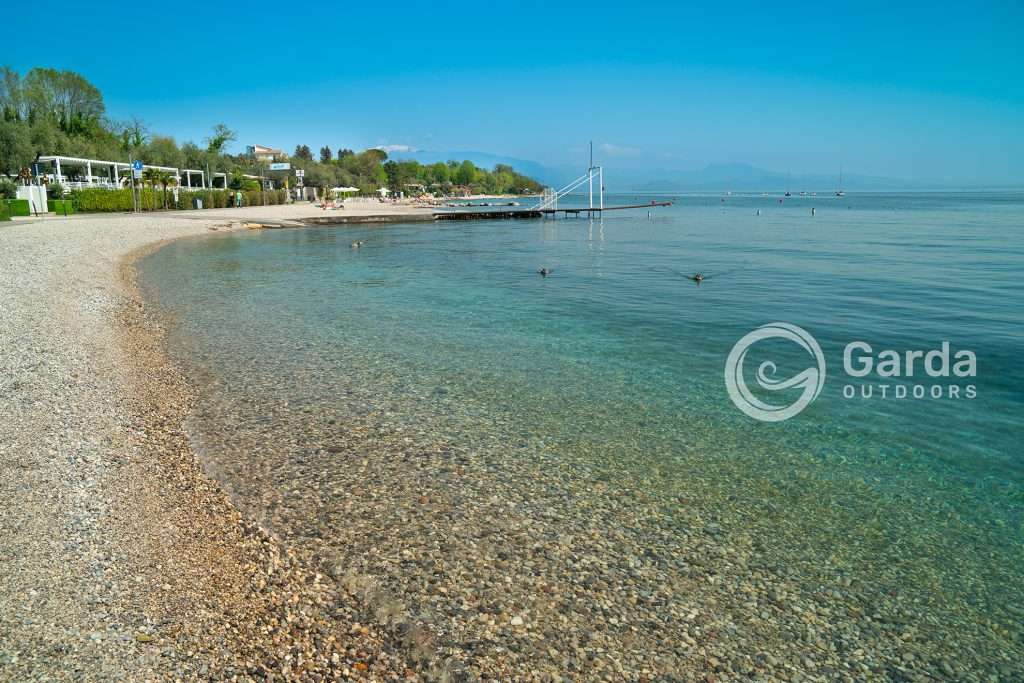
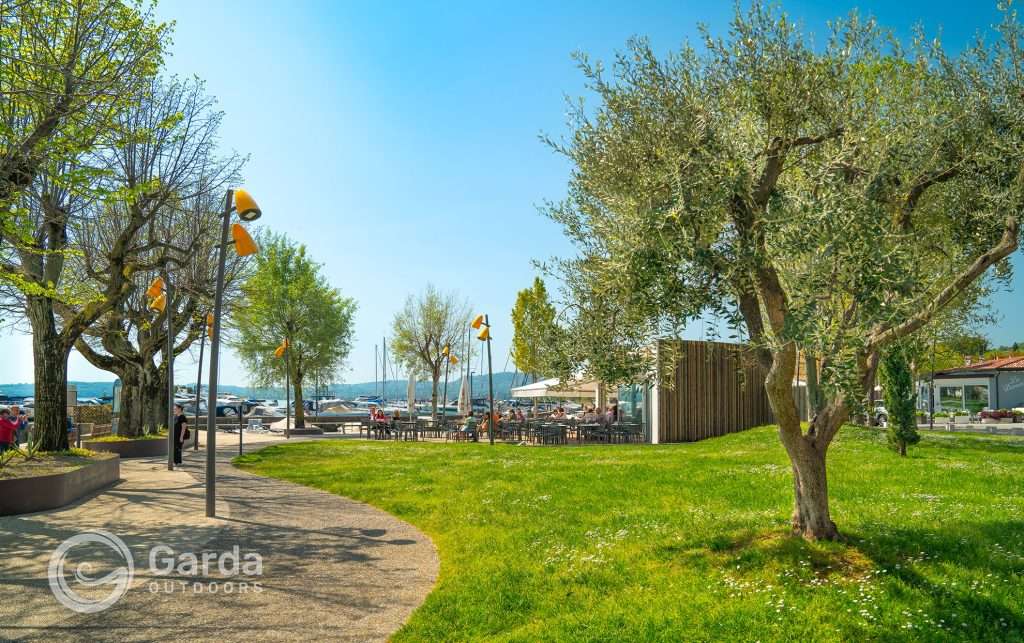
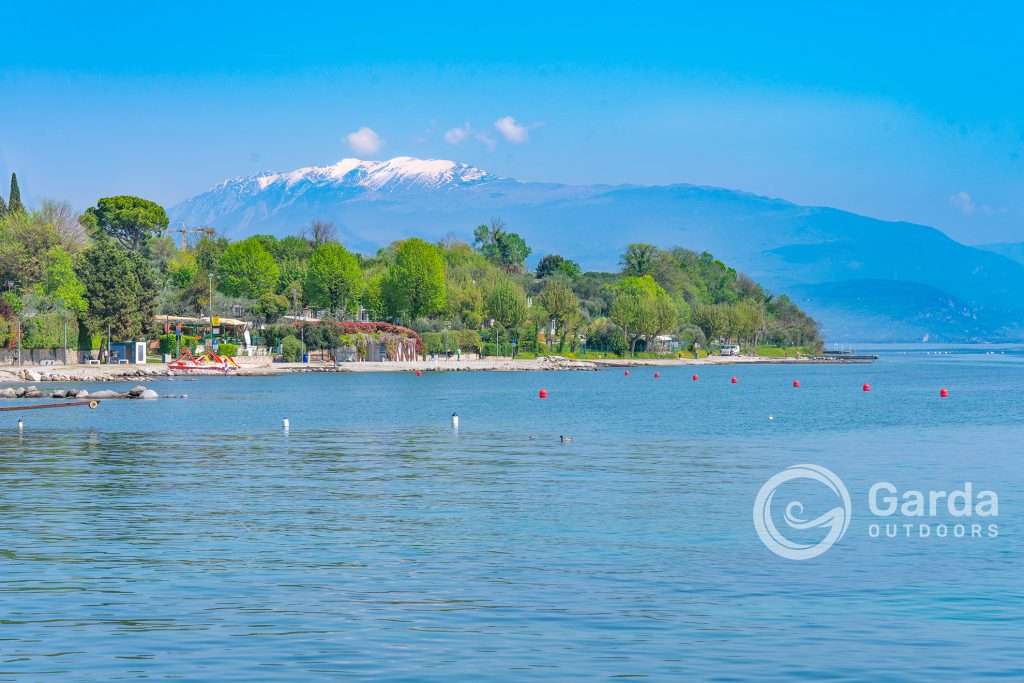
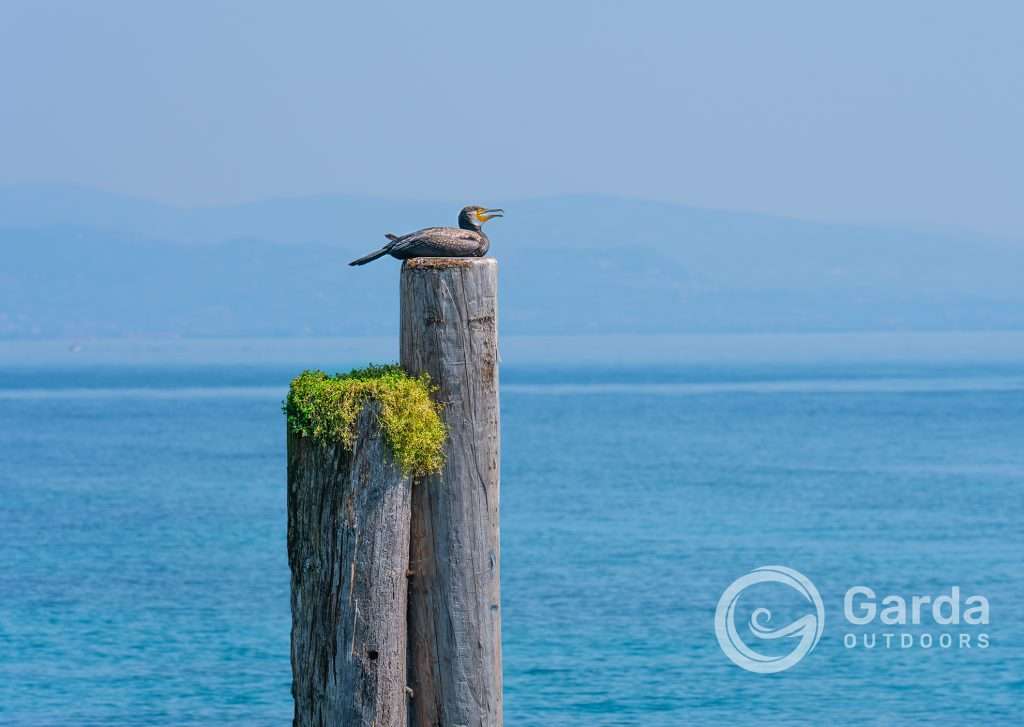
Events in Moniga del Garda: Valtenesi in Rosa
Every year, between the end of May and the beginning of June, the Valtenesi in Rosa event is held at the Moniga Castle: the most important event of Valtenesi Rosé wines with more than 100 wines and 45 wineries, free to taste.
For dates and info click here.
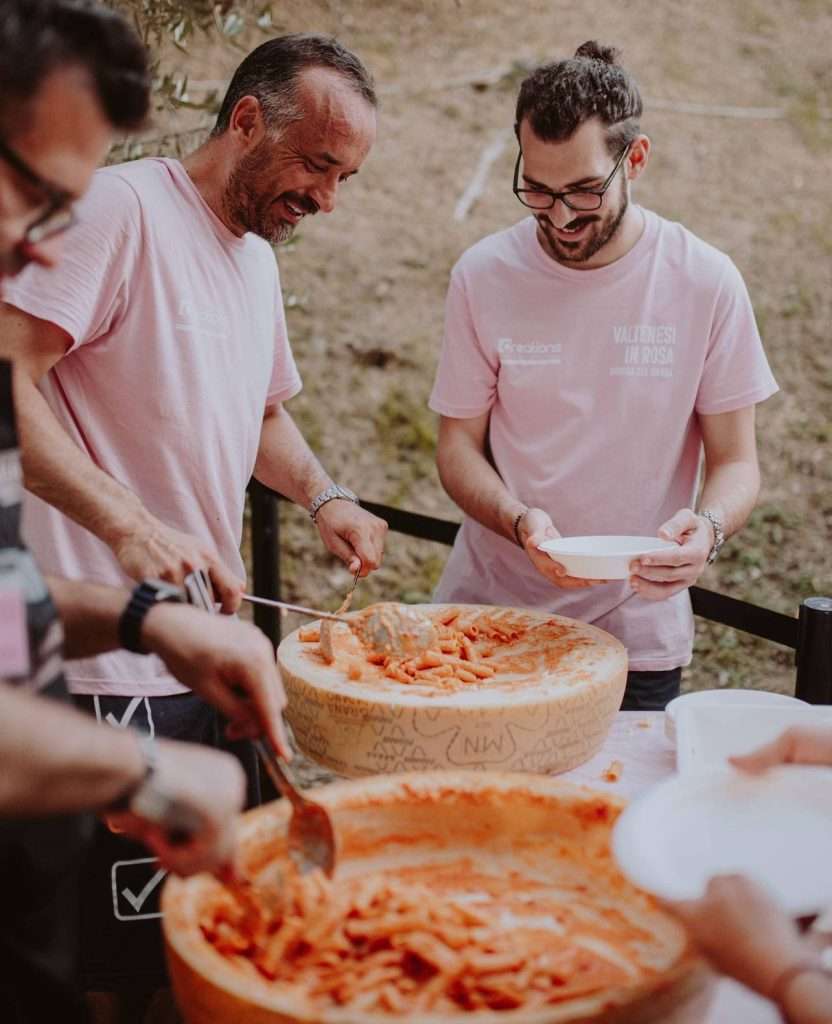
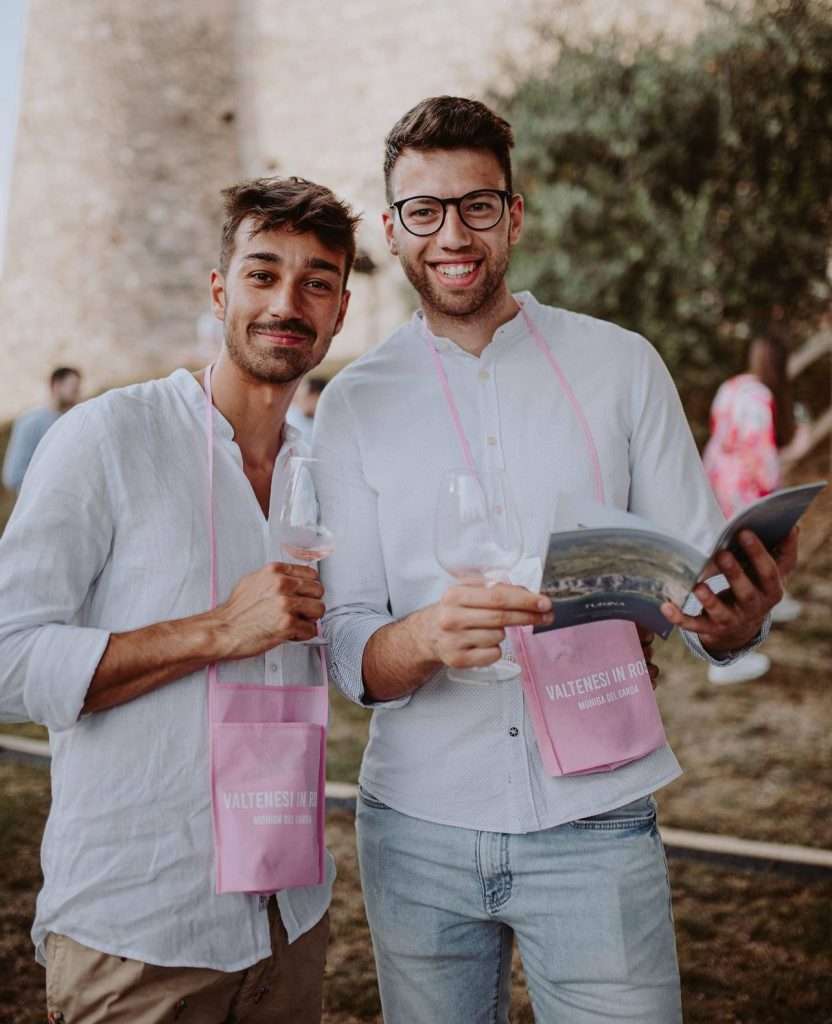
Where to sleep in Valtenesi
We recommend two different and unique places:
BorgoLuna Luxury Holidays House is a small jewel set in the village of San Felice del Benaco. 3 exclusive suites, born from the union between history and innovation, between sustainability of materials and respect for tradition.
For further information click here.
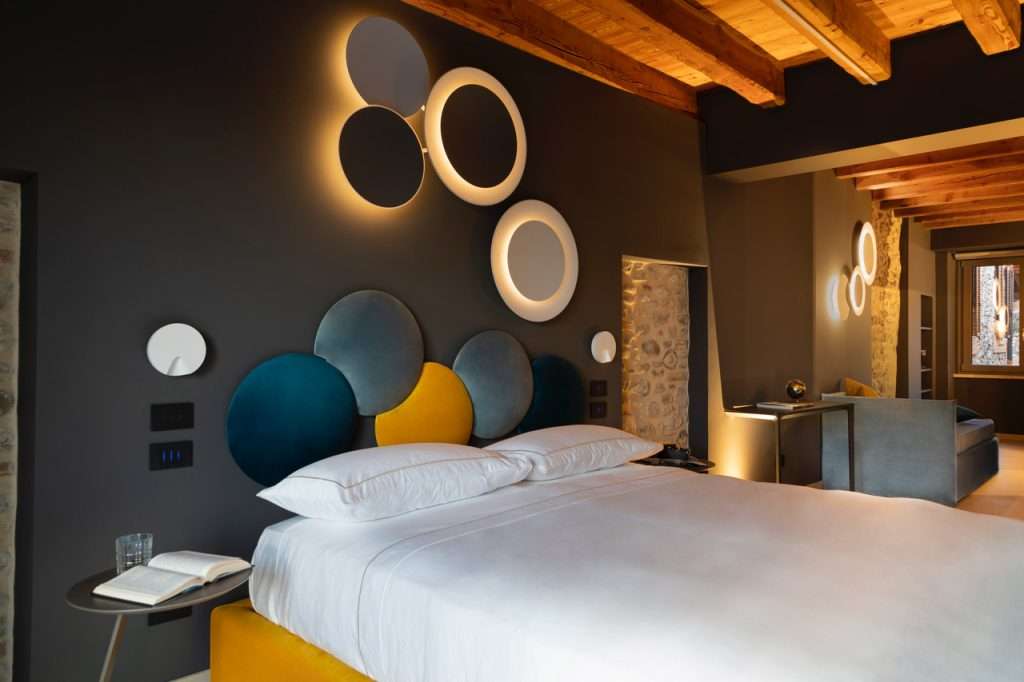
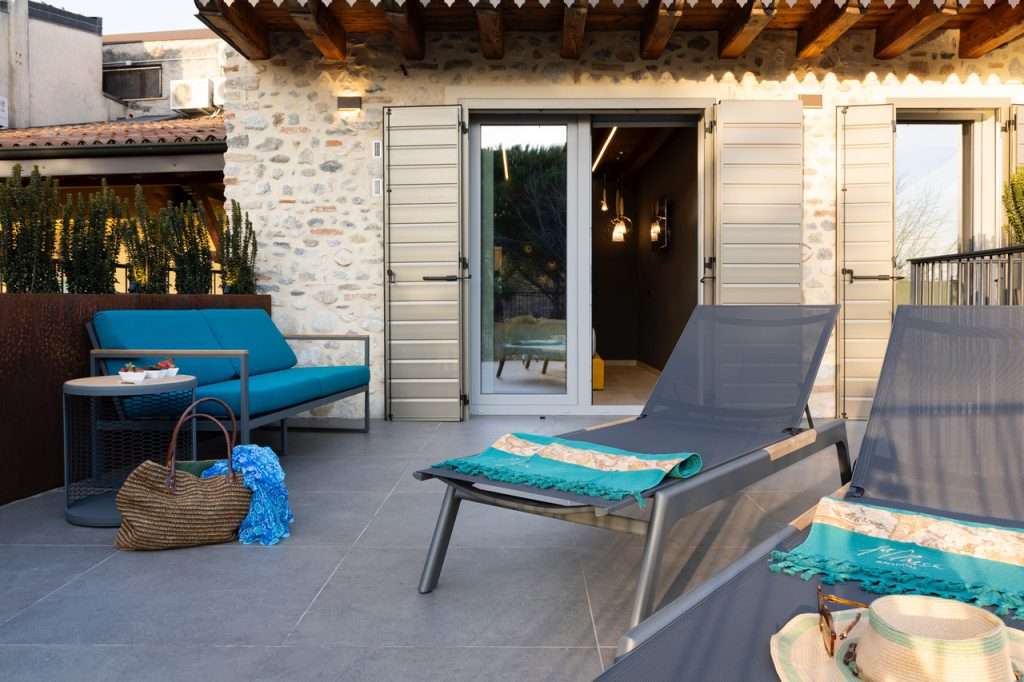
The Hotel San Filis, with all its charm of an ancient 17th century residence, is located in the historic heart of San Felice del Benaco. Swimming pool, garden, restaurant and many services available to guests.
For further information click here.
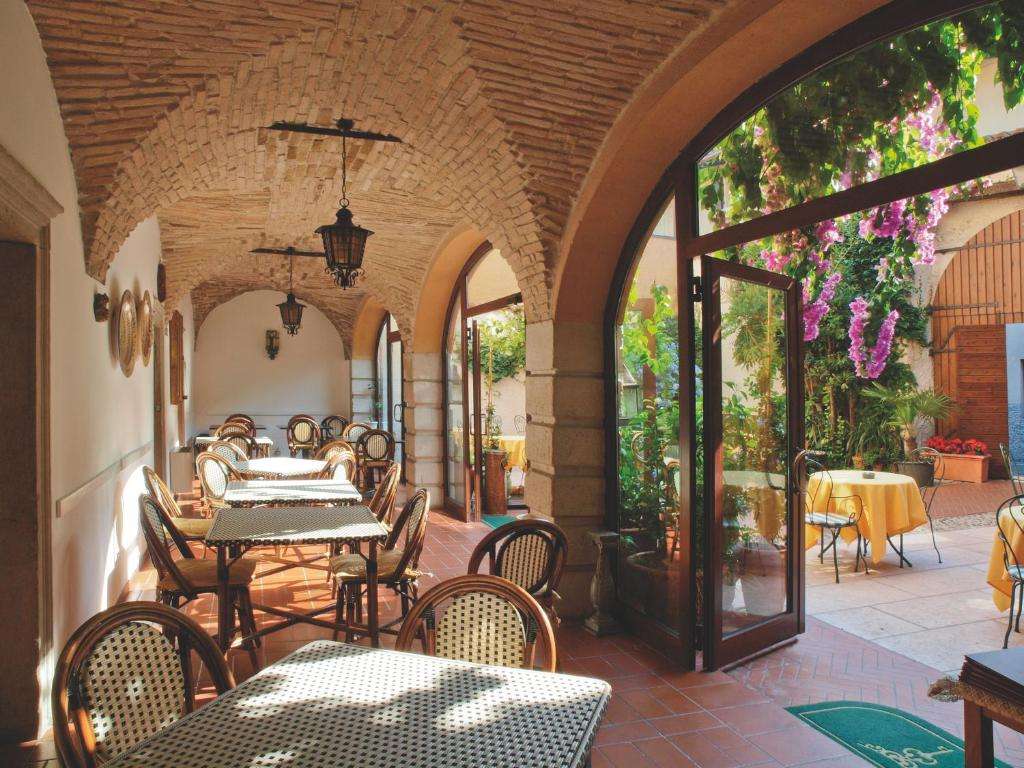
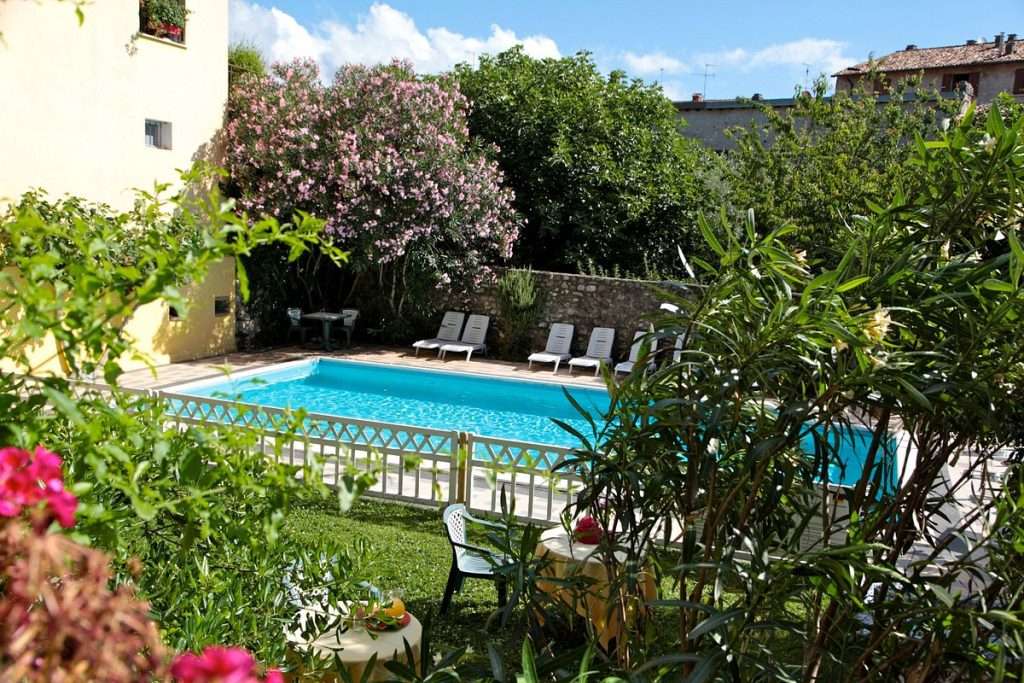
Experiences in Valtenesi
The cultural and natural heritage of Valtenesi offers many opportunities to live unique experiences in the area. Here are some ideas for many beautiful emotions!
To experience the waves of the lake as true protagonists on Wakesurf, E-foil, Foil, Jetsurf you cannot miss an adventure with the Your Wave team.
To visit a unique and exciting location surrounded by vineyards and book a food and wine tasting we recommend the Conti Thun Winery.
Do you love adventure? Do you like to get excited? Try parasailing and discover Lake Garda by flying thanks to the Garda Parasailing team.
Have you ever experienced the silence of an electric boat? At Nautica Elettrica San Felice you will find it for hire.
Do you like to photograph? Contact professional photographer Stefano Maraggi to guide you in your search for the perfect shot.
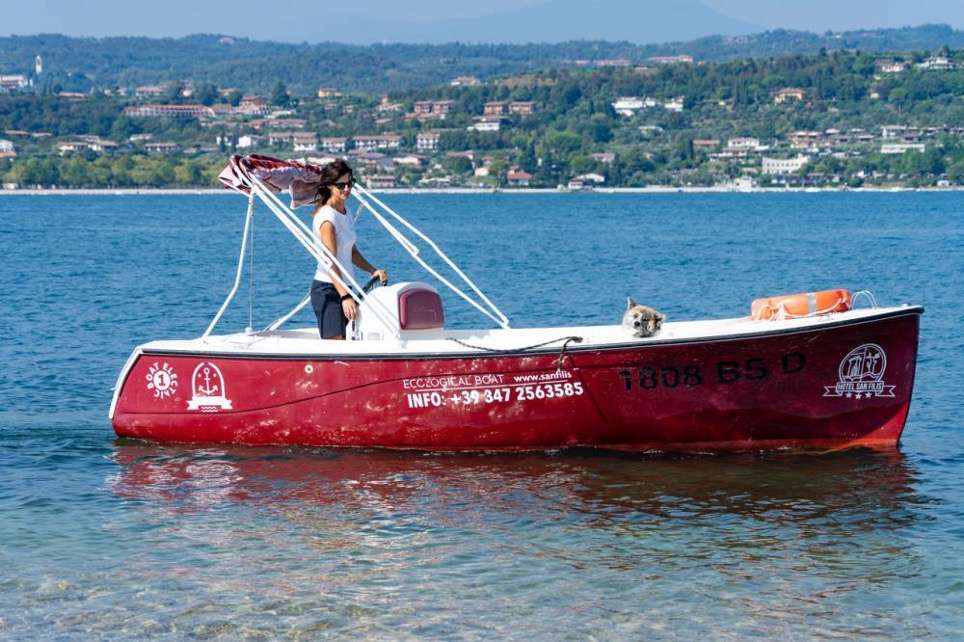
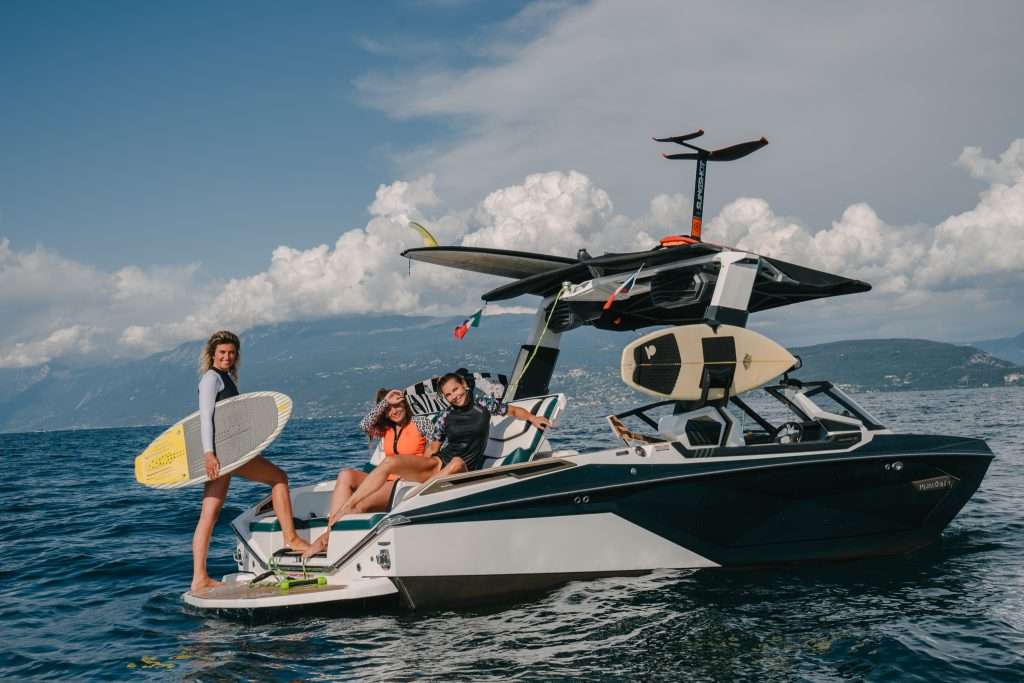
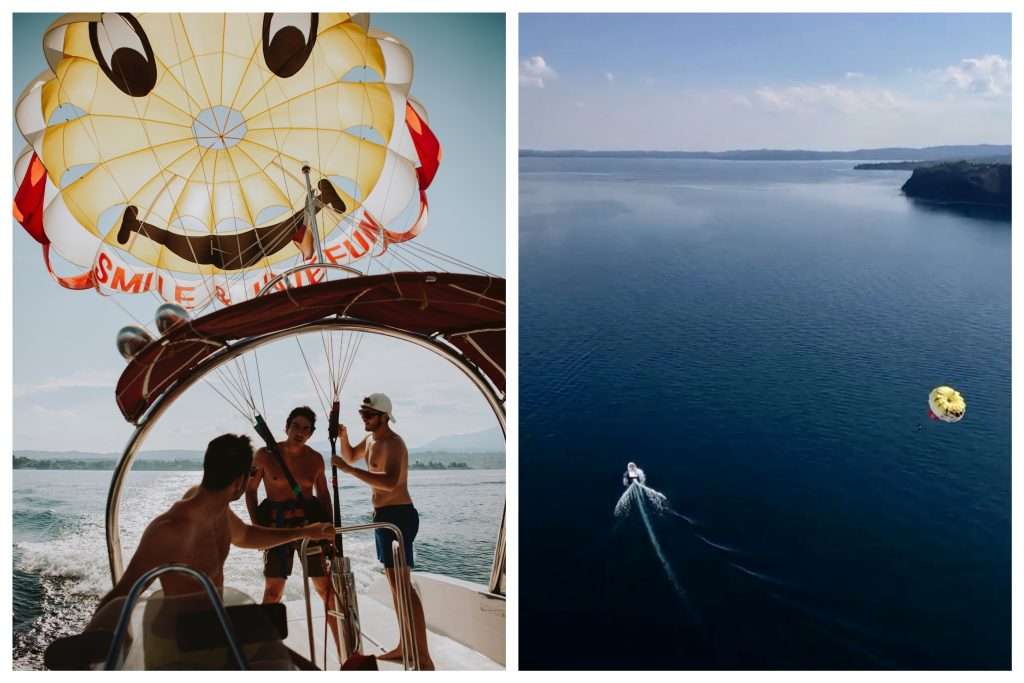
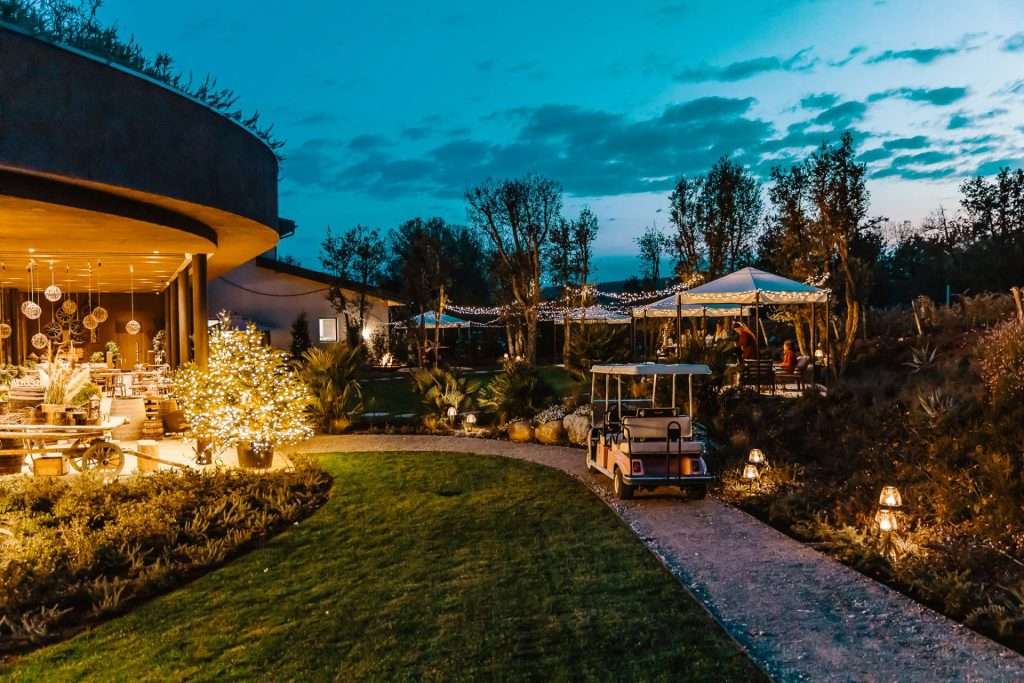
Moniga del Garda invites travelers to explore historical and natural beauties, immersing themselves in its authentic atmosphere. An unmissable stop for those who wish to experience the real Lake Garda, with its gentle rhythms.
See you next time dear Outdoors!
Silvia Turazza
